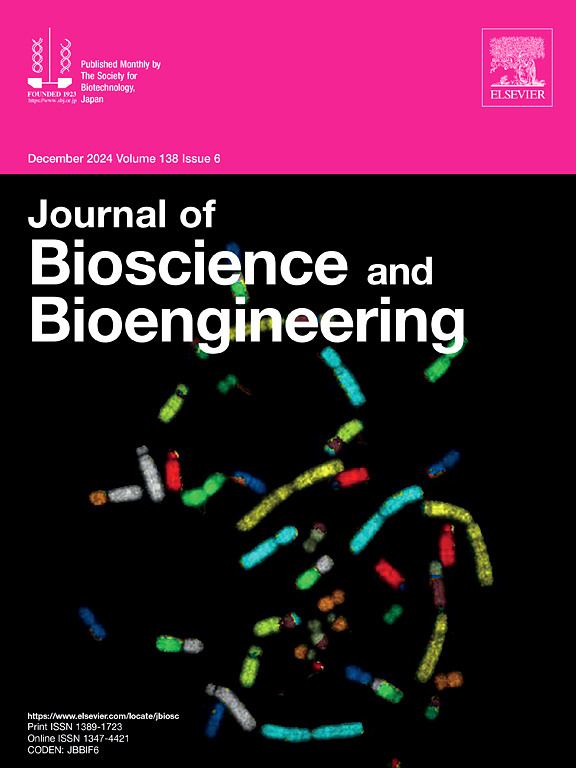Bacterial removal using liposomes and an anionic adsorber
IF 2.3
4区 生物学
Q3 BIOTECHNOLOGY & APPLIED MICROBIOLOGY
引用次数: 0
Abstract
Extracorporeal blood purification techniques using magnetic beads, which physically remove bacteria, fungi, viruses, and cytokines (disease agents) from the blood causing sepsis, have been studied. However, magnetic bead influx, which causes hemolysis and cytotoxicity, is an important issue. This study proposed a novel method for removing Escherichia coli from the blood using liposomes with high biocompatibility. To realize this method, a pegylated cationic liposome conjugated with antibodies (PCLA) that can simultaneously adsorb disease agents with the conjugated liposome antibodies and adhere to electrostatic absorbers was developed. E. coli was successfully adsorbed by PCLA in phosphate-buffered saline and electrostatically removed with a high removal efficiency of the antigen–antibody reaction (approximately 100 %). The removal efficiency of the antigen–antibody reaction in filtered bovine blood was approximately 50 %, demonstrating E. coli removal in the blood using the same method. Results suggested that this method can remove various disease agents from the blood by changing the antibody type.

利用脂质体和阴离子吸附剂去除细菌。
体外血液净化技术使用磁珠,物理去除细菌,真菌,病毒和细胞因子(疾病因子)从血液引起败血症,已经研究。然而,引起溶血和细胞毒性的磁珠内流是一个重要问题。本研究提出了一种利用高生物相容性脂质体去除血液中大肠杆菌的新方法。为了实现这一方法,研制了一种聚乙二醇化的阳离子偶联抗体脂质体(PCLA),该脂质体既能吸附疾病药物,又能粘附在静电吸收剂上。大肠杆菌被PCLA成功吸附在磷酸盐缓冲盐水中,并以高的抗原-抗体反应去除效率(约100%)静电去除。在过滤后的牛血液中,抗原抗体反应的去除效率约为50%,表明使用相同的方法可以去除血液中的大肠杆菌。结果表明,该方法可以通过改变抗体类型来清除血液中的多种疾病因子。
本文章由计算机程序翻译,如有差异,请以英文原文为准。
求助全文
约1分钟内获得全文
求助全文
来源期刊

Journal of bioscience and bioengineering
生物-生物工程与应用微生物
CiteScore
5.90
自引率
3.60%
发文量
144
审稿时长
51 days
期刊介绍:
The Journal of Bioscience and Bioengineering is a research journal publishing original full-length research papers, reviews, and Letters to the Editor. The Journal is devoted to the advancement and dissemination of knowledge concerning fermentation technology, biochemical engineering, food technology and microbiology.
 求助内容:
求助内容: 应助结果提醒方式:
应助结果提醒方式:


